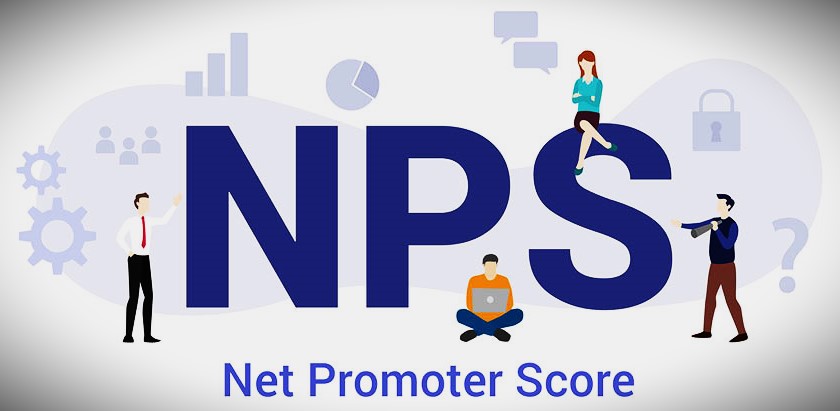What is the Net Promoter Score (NPS)?
The net promoter score is a metric companies use to measure customer loyalty and satisfaction. Introduced by Fred Reichheld in 2003, NPS provides valuable insights into how customers perceive your brand through their likelihood to recommend your products or services. NPS is straightforward yet powerful. It forecasts corporate growth and gauges client satisfaction. Based on the answers to a single question, “How likely are you to recommend our product/service to a friend or colleague?” businesses can classify customers as Promoters, Passives, or Detractors. This categorization helps businesses better understand their customer base and develop strategies that better suit their needs.
Why is NPS Important?
Understanding the importance of NPS is crucial for any business aiming for sustainable growth. NPS is a crucial metric because it directly correlates with business growth. Companies with high NPS typically enjoy higher customer retention rates, increased revenues, and better word-of-mouth marketing. According to research from Bain & Company, leaders in NPS categories grow at more than twice the rate of competitors on average. In essence, NPS doesn’t just measure customer satisfaction; it measures customer loyalty, which is the bedrock of long-term business success. A strong, devoted customer base that believes in and promotes your brand is indicated by high NPS scores, which makes it simpler to draw in new business and keep hold of current clients.
How to Collect NPS Data
Gathering accurate NPS data involves sending out surveys to your customers. These surveys usually contain one key question: “How likely are you to recommend our product/service to a friend or colleague?” followed by an open-ended question for detailed feedback. It’s essential to encourage candid responses to fully understand your customers’ sentiments and pinpoint areas for improvement. The process should be seamless and unobtrusive, ensuring customers can provide hassle-free feedback. Robust collection methods will lead to more reliable data and actionable insights. Using digital and traditional survey methods can help gather comprehensive data from a diverse customer base.
Interpreting NPS Scores
NPS scores range from -100 to +100 and are categorized into three groups: Promoters, Passives, and Detractors. Promoters (score 9-10) are enthusiastic and loyal customers who will continue buying and refer others, fueling growth. Passives (score 7-8) are satisfied but could be more enthusiastic and swayed by competitive offerings. Detractors (score 0-6) are unhappy customers who could damage your brand through negative word-of-mouth. Calculating the NPS is straightforward: subtract the percentage of Detractors from the percentage of Promoters. It’s critical to dig deeper into the feedback from Passives and Detractors to understand their pain points and address them proactively. You can always find ways to improve and interact with your clientele by going over and evaluating this data on a regular basis.
Actionable Strategies to Improve NPS
Improving your NPS involves a mix of strategic enhancements and consistent effort. Here are some actionable strategies:
- Enhance Customer Support: Make sure the members of your customer care team are properly trained and ready to deal with questions. Giving your clients prompt, courteous service and remedies can make a lasting impression. Updating your staff with the newest techniques in customer care and conducting regular training will help you keep your support standards high. Fostering a customer-centric approach among your staff can greatly elevate client happiness and the caliber of interactions.
- Improve Product Quality: Regularly gather and analyze customer feedback to identify areas for product improvement. Iterative enhancements based on real customer needs and feedback can significantly boost customer satisfaction. Conduct product reviews and take customer suggestions seriously to stay ahead of competition. Implementing quality assurance processes ensures that customers receive the best possible product or service, increasing their likelihood to recommend your brand.
- Personalize Customer Interactions: Use data to tailor your communication and services to individual customer needs. Personalized interactions make people feel important and have the power to convert apathetic consumers into advocates. CRM system implementation can assist in comprehending client preferences and offering distinctive, personalized experiences throughout all interactions. Improving personalization strengthens ties with clients and provides value, which promotes advocacy and loyalty.
The Role of Employee Engagement
Customer happiness is significantly influenced by employee engagement. According to studies, motivated staff members are more likely to offer excellent customer service, which raises your NPS. Initiatives like regular training, recognition programs, and a positive work culture can enhance employee engagement. High employee engagement often translates to higher quality customer interactions and improved NPS. Engaging employees creates a more motivated workforce keen on delivering exceptional customer experiences, hence driving positive customer feedback. Building an empathetic and supportive company culture can inspire employees to go above and beyond, directly contributing to a better customer experience.
Leveraging Technology for NPS Management
Technology can streamline the NPS collection and analysis process. Tools like AI-driven customer feedback platforms and CRM systems can help automate survey distribution, collect real-time data, and provide actionable insights. For instance, a guide by Customer Thermometer details best practices for leveraging technology in NPS management. Utilizing such tools can make tracking, analyzing, and promptly acting on customer feedback easier. Businesses can leverage technology to create more dynamic and responsive feedback loops, ensuring issues are addressed and improvements are continuously implemented. Technology also enables integrating NPS data with other business metrics, providing a holistic view of customer satisfaction and areas that require attention.
Conclusion
Boosting customer satisfaction through actionable NPS insights is a continuous process. By understanding NPS, effectively collecting and analyzing data, improving areas based on feedback, engaging employees, and leveraging technology, companies can significantly enhance their customer loyalty and satisfaction, leading to sustained growth. Remember, every feedback point is an opportunity to improve and grow your customer relationship. Embrace NPS as a vital tool in your customer experience strategy, and you’ll likely see meaningful improvements in customer loyalty and business performance. Businesses that put a high priority on NPS have a devoted clientele and a favorable brand image that draws in new business from strong word-of-mouth referrals.


